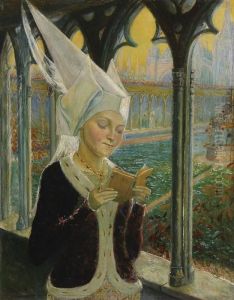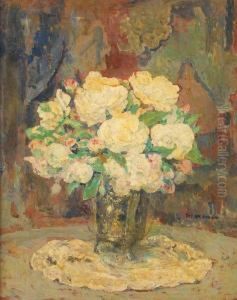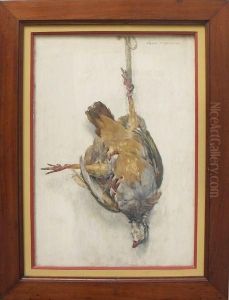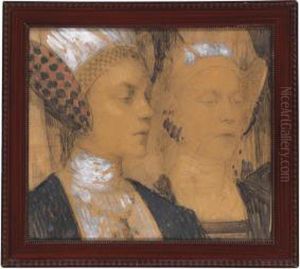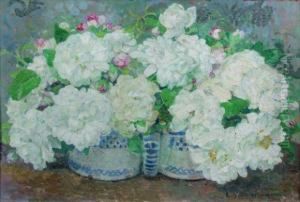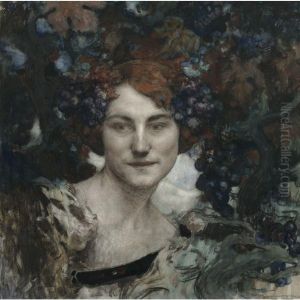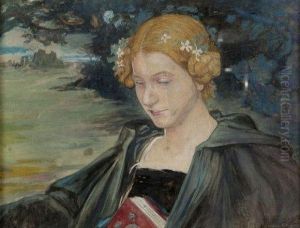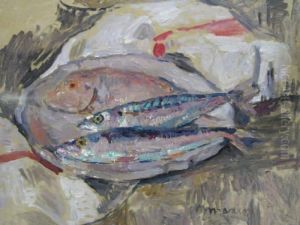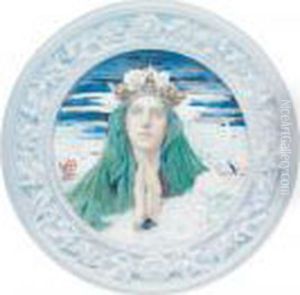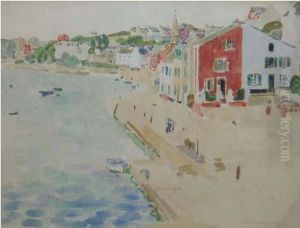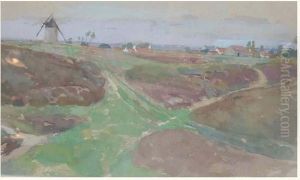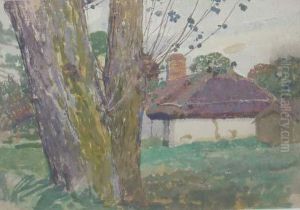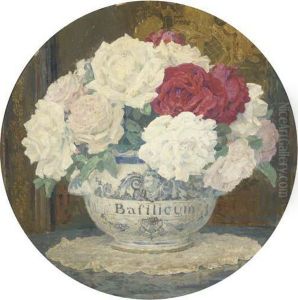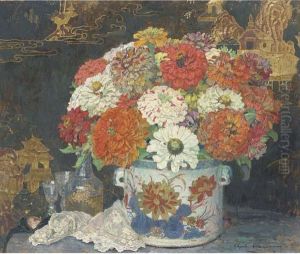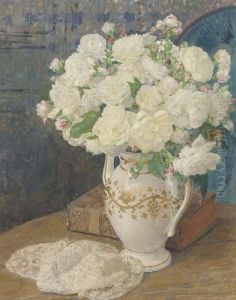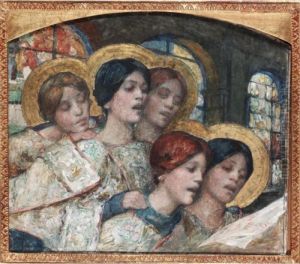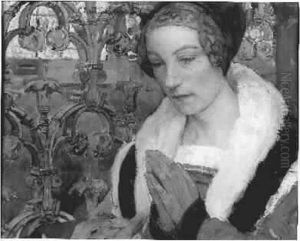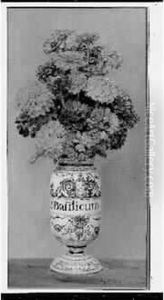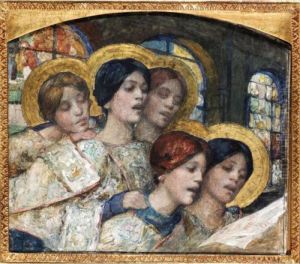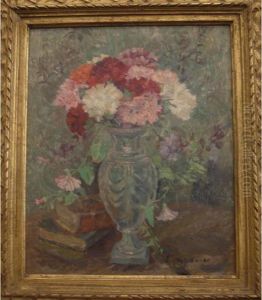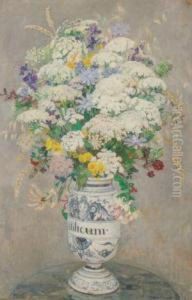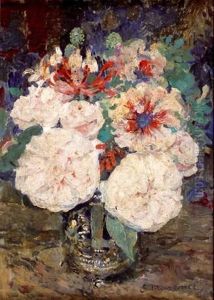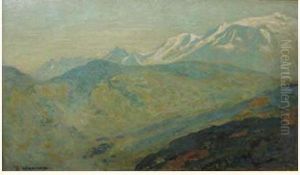Edgard Maxence Paintings
Edgard Maxence was a French symbolist painter, born in Nantes in the year 1871. He came from a background of an artistic family, which may have influenced his early interest in the arts. Maxence embraced the Symbolist movement, which sought to express the idea that reality could be represented by symbols and dreams, rather than through direct representation.
Maxence studied at the École des Beaux-Arts in Paris, where he was a student of Gustave Moreau, a prominent symbolist painter and teacher whose influence is evident in Maxence's work. Maxence's paintings often incorporated mystical themes, religious iconography, and an ethereal, dream-like quality. He was particularly known for his portrayal of women, often depicted with an aura of mystery and spirituality, surrounded by natural elements and adorned with elaborate costumes and accessories.
Throughout his career, Edgard Maxence exhibited his work at various salons, including the Salon de la Rose+Croix, which was dedicated to symbolist art. His work was well-received, and he was awarded several medals and honours. In particular, his piece 'The Soul of the Forest' (L'âme de la forêt) received significant acclaim.
Maxence's style was characterized by a refined use of color, delicate brushwork, and a focus on serene and contemplative subjects. He was influenced by the Pre-Raphaelites and Japanese prints, which can be seen in his attention to detail and use of flat areas of color.
Despite the shift in artistic trends towards modernism and abstraction in the early 20th century, Maxence remained committed to his symbolist roots. His work did not gain the same level of recognition as some of his contemporaries, but he maintained a dedicated following. After World War I, he retreated from Paris and spent most of his later years in Brittany, where he continued to paint until his death in 1954.
Edgard Maxence's legacy is that of a dedicated symbolist who captured the spiritual and mystical dimensions of life through his art. He left behind a body of work that continues to be appreciated by those who value the symbolist movement and its contribution to the development of modern art.
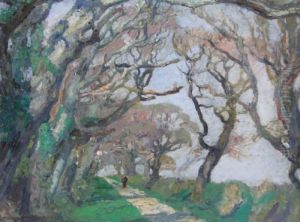
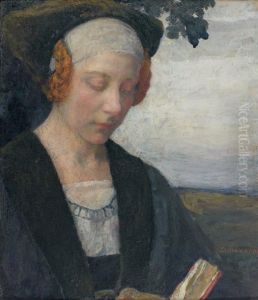
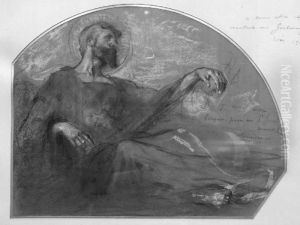
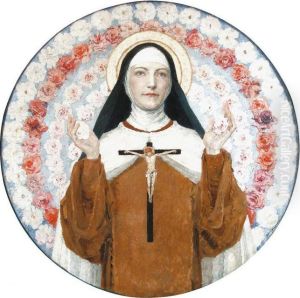



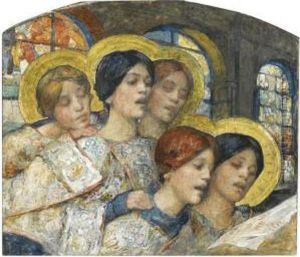
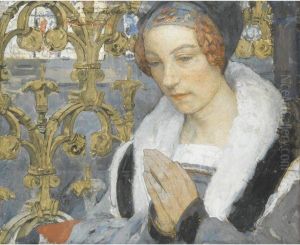

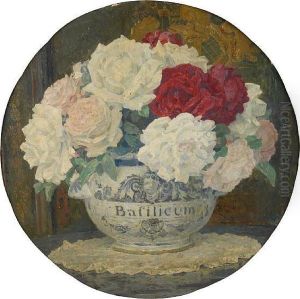








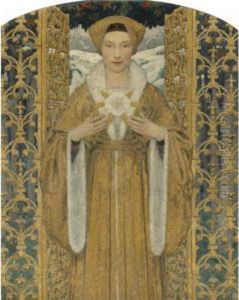
![Le Chant Des Anges [ ; The Song
Of The Angels ; Watercolour And Gouache, Heightened With Gold On Paper ;
Signed Lower Left ]](https://www.niceartgallery.com/imgs/1472440/s/edgard-maxence-le-chant-des-anges-the-song-of-the-angels-watercolour-and-gouache-heightened-with-gold-on-paper-signed-lower-left--d2c2f2c7.jpg)
![Femme En Priere [ ; Woman
Praying ; Watercolour, Gouache, White Chalk And Charcoal On Paper ;
Signed And Dedicated Upper Left ]](https://www.niceartgallery.com/imgs/1472441/s/edgard-maxence-femme-en-priere-woman-praying-watercolour-gouache-white-chalk-and-charcoal-on-paper-signed-and-dedicated-upper-left--520729f.jpg)

